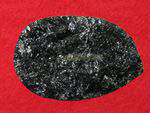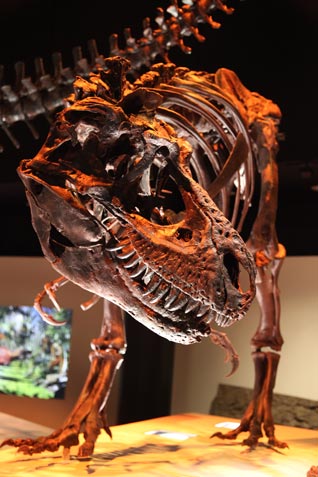Tyrannosaurs Roamed Late Cretaceous Japan According to New Study
Large Theropod Tooth Indicates Tyrannosaurs Roamed Japan
Researchers have identified a single, shed theropod tooth that indicates that large tyrannosaurs roamed the land that we now know as Japan some 80 million years ago. The single tooth is very characteristic of a member of the Tyrannosauridae family, however, it is not possible to identify a specific genus based on such fragmentary evidence.
This has not stopped the speculation, with some sources suggesting that the tooth might have come from a dinosaur which was very similar to Gorgosaurus, which is one of the better known Late Cretaceous tyrannosaurs, although, as far as we at Everything Dinosaur think, Gorgosaurus lived several million years later and is only known from North America.
The Single Broken Theropod Tooth – Potential Japanese Tyrannosaur
Picture credit: Goshoura Cretaceous Museum
A Fossil Find on Amakusa Island
In October 2014, a research team from the Fukui Prefectural Dinosaur Museum in collaboration with colleagues from the Goshoura Cretaceous Museum was exploring a series of Upper Cretaceous exposures in the Amakusa archipelago (Kumamoto Prefecture), a tooth from a theropod was found. In a press release, a spokesperson from the Goshoura Cretaceous Museum, which is run by the Amakusa city government, explained that the single tooth is believed to have come from either the upper left jaw or the lower right jaw of a carnivorous dinosaur.
The tooth morphology is typical of a tyrannosaur, it has serrations running down the sides of the tooth, very similar to those of dinosaurs in the Tyrannosauridae family. It is slightly recurved and has a characteristic robust appearance and a classic oval or “D” shape when seen in cross-section.
A View of the Underside of the Tooth – A Typical Tyrannosaur Tooth Shape
Picture credit: Goshoura Cretaceous Museum
A Shed Tyrannosaur Tooth from Japan
Only the crown has been found. No roots have been found in association with the tooth, so it is very likely a shed tooth. Dinosaurs replaced teeth throughout their lives. Palaeontologists have calculated that a tooth in the jaws of Tyrannosaurus rex probably lasted less than two years. The dental enamel on the tooth is quite well preserved and the fossil measures 4.2 cm long, 2.5 cm wide (at the bottom) and it is 1.6 cm thick. Based on the size of the tooth, scientists have estimated that the tyrannosaur that lost this tooth could have measured over seven metres in length. The original length of the tooth (crown plus root) is estimated at around 5.6 cm long.
The tooth would have been quite sizeable, but this is not the largest theropod tooth ever found in Japan. In 2008, Everything Dinosaur reported the discovery of a much older dinosaur tooth that measured more than eight centimetres in length.
To read about this fossil discovery: Largest Meat-Eating Dinosaur Tooth Found in Japan.
The serrations (denticles) are quite prominent and measure about 0.3 mm in size. In the press statement, it was stated that the tooth was found in exposures related to the Ikusagaura stratum of the Himenoura Group (Upper Cretaceous – Campanian faunal stage).
An Illustration of a Typical Gorgosaurus (G. libratus Member of the Tyrannosauridae)
Picture credit: Everything Dinosaur
A Tyrannosaur Tooth from Japan
Commenting on the fossil find, a team member from Everything Dinosaur stated:
“Dinosaur fossils from Japan are exceptionally rare and most material is extremely fragmentary. The finding of this single tooth does indicate that during the latter stages of the Late Cretaceous, this part of the world was home to large tyrannosaurs similar to those found in similar aged rocks in North America and elsewhere in Asia.”
Earlier this year, (April 2017), Everything Dinosaur reported on the discovery of the most complete dinosaur skeleton ever found in Japan. The fossilised remains of a hadrosaur were discovered on the Japanese island of Hokkaido. The fossils were found in marine strata, it is likely that the corpse of this herbivorous dinosaur was washed out to sea – an example of a “bloat and float” form of taphonomy.
To read an article about this discovery: Japan’s Most Complete Dinosaur Discovery.
A Mounted Skeleton of a Gorgosaurus (Late Cretaceous Tyrannosaur)
Picture credit: Manchester University
Visit the Everything Dinosaur website: Everything Dinosaur.





